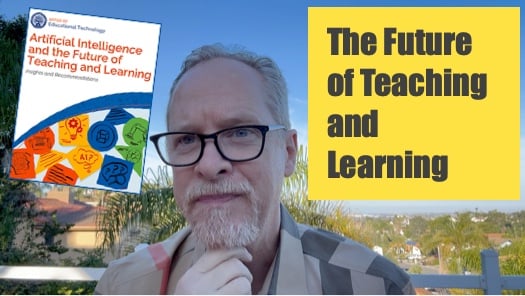Quick Tip Wednesday: How to Set Up a Gratitude Month
Welcome back to Quick Tip Wednesday!

In his recent video, Dr. Mike Swize, former superintendent at Palm Springs Unified School District, discusses the potential benefits of implementing artificial intelligence (AI) in education, as outlined in a document created by the US Department of Education titled "The Future of Teaching and Learning and Artificial Intelligence."
He emphasizes the importance of focusing on how AI can help meet student needs and close persistent achievement gaps. Dr. Swize explains that AI applications can assist teachers in making their jobs more efficient, allowing them to focus on individual student needs.
Additionally, he highlights how AI provides new ways for students to interact with each other and with their teachers, particularly through generative creative tools. He recommends the document as a valuable resource for understanding the role of AI in education and expresses his enthusiasm for discussing the implementation of district policy related to AI in future content.
We've been talking about artificial intelligence, and I wanna share with you a powerful document created by the US department of this really looks at the future of teaching and learning and artificial intelligence.
The article is available online and it's free. You can download the entire document, and it really reminds us to focus on what are the potential benefits of implementing artificial intelligence in a school district or a school classroom?
And the first always should be that it's going to help us meet student needs.
Artificial intelligence has the capacity to be incredibly adaptive and help us close those persistent achievement gaps that have been taking place in our school systems for so long.
If we keep student learning at the forefront, it will help with the implementation in our school districts.
There's a lot of information also about implementing district policy, and that's something I can't wait to talk to you all about. But for today, just wanted to focus on what are the uses? Well, one is to help students increase their level of academic achievement.
The second and also very important is that artificial intelligence applications can assist teachers in making their job a little more efficient and a little bit easier so that it frees up their time to focus on individual student needs with that human lens. So it can be very, very helpful for our teachers to help increase their efficiency so that they can continue to focus on those who need them most, our students in the classroom.
And then finally, artificial intelligence gives us new ways to interact with our students and for our students to interact with each other and with you as a classroom teacher. Some of the generative creative tools are available that I really see having great potential in increasing the way our students can communicate with one another and communicate with us. So again, highly recommend the document US Department of Ed. It's the future of teach and learning and artificial intelligence.
.png)
Welcome back to Quick Tip Wednesday!

Mid-Year Reflection: Your Secret to a Stronger Second Semester
A great way to get your learners engaged in your Alludo program is by keeping the content in your program up-to-date and relevant. Rebecca has...